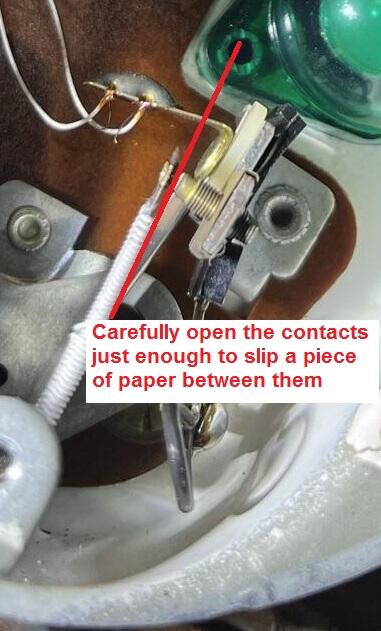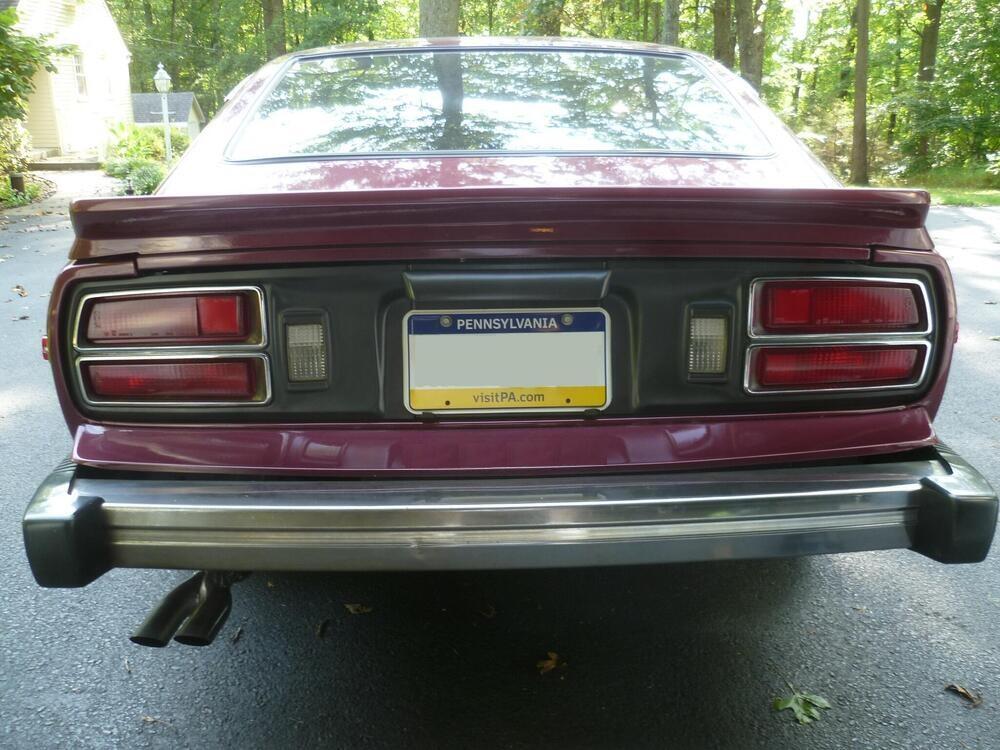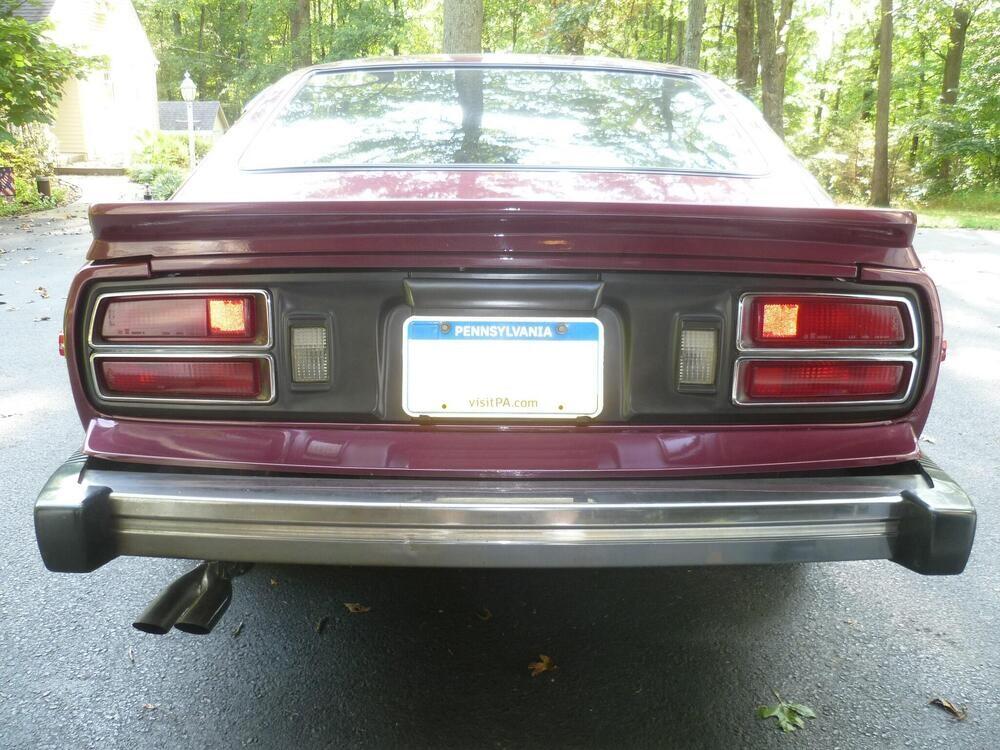Everything posted by Captain Obvious
-
77 280z Restoration
I will check a couple of the distributor mounted matchbox modules when I get a chance. I've got a couple tossed in a box that came from who-knows-where. I'm sure some of them work. Probably. Maybe? At least at room temperature.
-
77 280z Restoration
I did the same digging you did and that page turned up on my radar too. On that page they indicated that the simpler 4-pin GM HEI module used a positive transition, but the other later modules used positive to negative. I have not verified this myself, but they say: "The 4-pin HEI uses a negative-to-positive transition, while the 7/8-pin uses a positive-to-negative transition (though this *might* have changed in some applications). Thus polarity of the reluctor signal is critical to proper function." I've poked around a bunch with the Datsun modules they put by the passengers feet (up through 78) and those fire on the rising edge of the VR pickup. I've got a couple of the later matchbox ignitors here, but haven't checked them. Here's a couple pics of ignition module waveforms. This is a 77 module being driven by a ZX distributor (so the shape of the VR is a little different than previous years). This should be about 6000 RPM engine speed. Note that when the output signal goes high, it releases the coil and initiates a spark. You can see that it sparks on the rising transition. And here's a 78 module om my newer digital scope. Note that I'm not using a real VR input on this one, I'm just using a signal generator to provide a simulated input signal. But the important part is that it also fires on the rising edge. This is 6000 RPM. I know we are getting off topic here and if anyone wants to get all real geeky with the ignition modules, let me know and I can start a thread with that intention.
-
Thermostat/Oil gauge
Well you were doing great until the part about bending the arm a little. The tension in that arm affects the accuracy of the gauges. Don't know if you bent it enough to cause things to be inaccurate ,but a working (but inaccurate) gauge is probably better than one that doesn't work at all, right? You see the little set-screw threaded into the regulator contact? That sets the pre-load on the contacts and is used to calibrate the regulator. Let's just hope yours is still good enough.
-
Rear tail light panels
Another data point... I found the Canadian version online and the UPC is: Model Number: 264656 UPC: 020066217174 While the back of the can I have here is >> UPC: 020066210137 Again, not to say they aren't the same, but can't confirm that they are.
-
Rear tail light panels
Now as for the details about the part number... That's no fun. Gives me less confidence that it'll be the same. Not saying it's different, but just saying I'm less confident that it'll be the exact same thing I have here. Wonder why it's a different number. The SDS sheets are pretty much identical for the two numbers (264656 and 261413), but that's not a guarantee either. In any event, if you can turn up a can of that spray, give it a shot and let us know if you like it.
-
Rear tail light panels
Absolutely I did. I'll fix that now before I confuse anyone else.
-
77 280z Restoration
That's a really good point there. You set the base timing using one of those two modules, but there's really no guarantee that the output timing from the other one will be the same. Could simply be that the propagation delay through the modules are different, or it could be something way more significant than that. I know that GM put a "cranking mode" base timing setting into a lot of their later modules used as a bootstrap mode to fire the ignition before the computer was able to take over. Now that's for the later modules that used an ECM to control the timing after the engine was running, but they may have put something like that in the earlier simpler non-ECM controlled units too. And if they did, the question is... How does that relate to the rotational position of the VR pickup titts? And now that I'm thinking about it, I thought of something else... I know the earlier modules (up to 78) fire directly when they receive a pulse from the VR pickup, and they fire on the rising side of the VR signal. Many (most?) of the rest of the later modules fire on the falling edge? I don't remember what GM did, but I will look into it. I should have thought of that before. Arrgh. Bottom line is put a timing light on it and see if you're OK. You might have to pick one style as primary and the other as 'backup only".
-
Rear tail light panels
@CanTechZ Unfortunately lighting can play such a huge role in how things like this look, especially in pictures. It's really hard to do comparisons with one variety and another. If you can get your hands on a can of that Rust-Oleum 261413 Metallic Carbon Mist, give it a try on a test piece and see what you think. I had my taillight panels completely done, clear matte coat and all, with the Ford Dark Shadow and I was never completely satisfied. That Ford color is really good, but I think the 261413 is better. Give it a shot if you can find it. I bought some very thin aluminum sheet and I use that as my test coupons. I used to do it with cardboard, but the textured surface of the cardboard did not give accurate results.
-
Thermostat/Oil gauge
The amount of movement in the regulator is so small that I'm not sure you would be able to see it opening and closing. I would try cleaning the contacts before giving up on the gauge. Gently open the regulator switch contacts just enough to be able to slip a piece of paper (white printer paper) between the contacts and then let the contacts close on the paper. Drag the paper back and forth between the contacts a couple times and see if the problem goes away? Like this:
-
1977 280z AC -- issue # xx of yy
I know practically nothing about A/C, but I have two thoughts: First is about the leak seal... I don't know any mechanic ever who has even remotely liked any of the sealing additives in anything. Tires, radiator, A/C. Anything. Ever. In fact, my local pro says he won't even evacuate a system if he's told that it has some sort of leak stop in it. Won't put his machine on it. Second thought is about brazing the leak in the condenser. Again, I'm no expert, but there's no way I would try that while the system had refrigerant in it. The pressure will just blow the braze material away from the hole, and even more importantly, you absolutely do not want to light anything fluorocarbon on fire. Bad idea.
-
Rear tail light panels
Here's a couple pics of the can. Duplicolor 261413 Metallic Carbon Mist: I tried two varieties of matte top-coat and didn't find much difference. I tried Rust-Oleum Matte Clear (#285093) and Krylon Colormax Flat Clear (#53530). Of those two varieties, I found the Krylon to be a tiny bit more flat than the Rust-Oleum, so I went with the Krylon.
-
Rear tail light panels
Bottom line? Duplicolor 261413 Metallic Carbon Mist. Top coat with Krylon Colormax 53530 Flat Clear. More detail? My first attempt was BFM0360 Ford Dark Shadow Gray. The basic color was good, but it really lit up when light hit it. In other words, it looked pretty good in certain lights, but in other more direct light, it didn't look so great. Looked way too light. My second attempt was Duplicolor 244228 Metallic Charcoal, and pretty much the same problem as the Ford Dark Shadow Gray. It looked good in the shade, but when light hit it from the right (or wrong?) angle, it was way off from stock. My third and final attempt was Duplicolor 261413 Metallic Carbon Mist. I found this paint looks good in both sun and shade and does not "light up" like most of the other metallic options (like the Dark Shadow Gray). I would recommend this color over all of the other previously discussed varieties. Of course, it really doesn't mean much unless I could compare it to a stock colored panel, but I don't have one here. Anyway, it looks like this. This is in the shade with no flash: In the shade with flash. Note how the reflectors in the taillights and the license plate lit up with the flash, but the panel did not: And in the sun. Half direct sun, and half shade-ish:
-
Rear tail light panels
-
77 280z Restoration
Nice. That should help restore some confidence in the ignition system!
-
77 280z Restoration
Well it's not simply an implication anymore. I've poked around inside the 78 module enough to determine that they DID incorporate current limiting technology into it. 74-77 did not have current limiting, but 78 did. I have no doubt the 79-83 matchbox modules incorporated current limiting as well.
-
Headlight switch problem- 1978 280z
LOL.
-
How The Gauges Work
There you go. That's what's going on with the power regulator! Other than the mass jumble of extra wiring nest in the back... You could have cleaned that up to make it simple enough that it looked we.... simple. Thanks Steve!
-
Time to replace the rear suspension bushings in the 260Z
You don't have to unload the suspension when you loosen those bolts. In theory, you can leave it on the ground and loosen them. The inner rubber of the bushing should spin to it's neutral point once the bolt head is loose. Of course, this assumes you can actually fit enough of yourself under there to loosen and re-tighten those bolts with the car on the ground. I don't remember exactly what I did... It think it may have involved rolly dollies on wheels.
-
Float level advice, please.
I believe the importance of getting the float level-ish is to prevent it from hitting the underside of the lid. Here's a description of the problem I've had. This is what was happening that made me add some weight. Level is too low, adjust the tang. Level is still too low, adjust the tang some more. Level is still too low, adjust the tang some more. Bam! Carb overflows. At that point, the float is probably hitting the underside of the lid, or maybe even or the inside of the bowl if the angle is extreme enough.
-
Antenna plug capacitor
I'm no radio expert, but I believe the purpose of that capacitor is a filter to only allow signals through in the range that the radio cares about. It also blocks any DC voltages, so you won't ever be able to shock yourself by grabbing the antenna or some other strange fault like that. You could put that filter either in the plug (as they have), or inside the radio case, but the sooner you get rid of the stuff you don't want (noise), the better. That's my take.
-
Time to replace the rear suspension bushings in the 260Z
So you have like three quarters of an inch less toe just by changing the inner bushings? Am I interpreting that right? If so... Wow. Can you take some more pics of the bushings you took out. Shadows in the pic you posted above are making it look like there's some real weird stuff going on with them. Might just be light, or might help explain what was going on? And lastly... You did remember to leave the big bushing bolts loose until the suspension was loaded, didn't you?
-
Float level advice, please.
So my inserts were made on a lathe (because I have a lathe and I'm not afraid to use it), but you could probably find something store bought that would perform the same task. My thoughts on that are... Brass has higher density than steel. And steel has higher density than aluminum. I used brass because it was the highest "bang for the buck" in the density department meaning that the insert could be made smaller to get the highest mass (as compared to steel and aluminum). If for some future reason, the ballasts I put in there are deemed too heavy, I can switch out to steel or aluminum in the future to lighten them up. I'd be happy to talk on the phone about your frustrations. If you want, send me a PM and we'll do some of that. I feel your pain.
-
Float level advice, please.
My thoughts? I spent a bunch more time trying to get the 72 floats to work without adding weight and I failed. Nothing I tried could get them to work, so I added weight. Again. Here's some pics of my latest incarnation. This time I made a threaded insert so I could change the weight in the future if necessary:
-
Time to replace the rear suspension bushings in the 260Z
Me too. I mean, I've only done two sets, but the old used ones I took out looked good enough that I think they could be re-used if really necessary. Steve's look hammered!
-
One-Family 1972 240Z Restoration (HLS30-93069)
Yes, the pivot points are different between the two lids. And the mounting surface depth for the float valves into the lids is different too. I took a bunch of measurements of the lids a while ago an think I posted some details. And about the bent float hinges, I'm wondering of the severe bending of your hinges was done by ZT in order to get them to work right. They shouldn't be like that, but that might be the only way they could get it to work? Ideally, here's what you want your float to look like when the level is correct: And absolutely check the float levels wet. If the levels are OK, then you're done. if not, use the wet set method to get them right. You can't just measure them dry and assume that's good to go.











